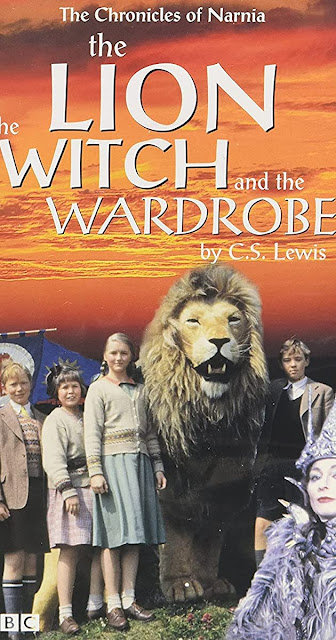The Lion, The
Witch and the Wardrobe
About Author:
Clive Staples Lewis (29 November 1898 – 22 November 1963)
was a British writer and lay theologian. He held academic positions
in English literature at both Oxford University (Magdalen
College, 1925–1954) and Cambridge University (Magdalene
College, 1954–1963). He is best known for his works of fiction, especially The
Screwtape Letters, The Chronicles of Narnia, and The
Space Trilogy, and for his non-fiction Christian apologetics, such as Mere
Christianity, Miracles, and The Problem of Pain.
Summary:
This is a story about Peter, Susan, Edmond and Lucy,
siblings who live in England during World War II. They discover a wardrobe and by
entering it, they are transported to a magical world called Narnia.
Narnia is ruled by the White Witch, an evil sorceress who
keeps the world in eternal winter. However, a prophecy tells those four humans will
take down the Witch. Knowing this, the White Witch convinces Edmond to bring
his siblings to her. The group is taken in by beavers and learns that Aslan, a
mighty and powerful lion is back in Narnia, ready to restore order. Scared, Edmond
runs away from everyone and decides to visit the White Witch. When he gets
there, he is punished for not bringing his brother and sisters. Peter, Susan,
and Lucy eventually meet Aslan and an army is summoned.
Edmond is rescued from the White Witch, but because he is a
traitor, he technically belongs to the White Witch. Aslan and the White Witch make
a deal so that Edmond can stay if Aslan is sacrificed. The White Witch kills
Aslan and she takes her army to finish off Aslan's forces. Aslan comes back to
life and revives the stone statues at the White Witch's castle.
The White Witch and her forces are defeated in battle and
Aslan appoints Peter, Susan, Edmond, and Lucy as the kings and queens of Narnia.
In the end, after years of living in Narnia, the group stumbles back into trees
and re-enters the normal world as they were as children. While the previous
book in the Narnia series focused more on the allegory of Creationism, this
story focuses heavily on the allegory of Christ and the crucifixion.
It's Aslan, the innocent, who must die for the life of Edmond,
the guilty. As Aslan is approaching the Stone Table where the White Witch
waits, the tone in his voice is similar to that of Christ in the garden of
Gethsemane. He is reserved and nervous, not quite the lion that readers have
known him to be. However, since Aslan knows that no innocent blood can be
spilled on the table, he is confident that he will be resurrected.
One of the interesting aspects of the story is how time
works in Narnia compared to the real world. In Narnia, the children grow upto
be kings and queens, living a good number of years into their adulthood. Yet,
when they are drawn back through the wardrobe and re-enter the real world, they
appear as children, as if time had never moved forward.
This speaks highly of how children view time. Because of a
child's limited life experience, time seems longer than it really is. This is
probably why a five-minute timeout can seem like an eternity for misbehaved
children, and a few seconds in a wardrobe can feel like a lifetime in another
world. The story is also a study into forgiveness in the context of family.
Edmond betrays the others early in the story, yet they are
willing to forgive him. This shows that even though an individual within a
family acts selfish and prideful, there is always an opportunity for
forgiveness if both parties are willing to work things out. It takes courage to
forgive, both from the receiving and giving party.

Comments
Post a Comment